Whenever you find out that colored smoke is coming out of your tailpipe, beware! There’s something wrong with your vehicle.
That being mentioned, the blue exhaust is no exception. And if you notice blue smoke from exhaust on startup only, the issue might be quite serious. But why does it happen?
The emission of blue exhaust, in most cases, indicates an oil-related issue. Maybe it’s leaking in the engine from somewhere, or maybe oil is burning somewhere else. However, the leakage mostly occurs due to damaged parts, and you don’t want to take chances with that.
To relieve your worries, I’ve conducted some research on the reasons behind blue exhaust on the startup. And I’ve found out how serious each reason is and what you should do to get rid of them. Let’s have a look.
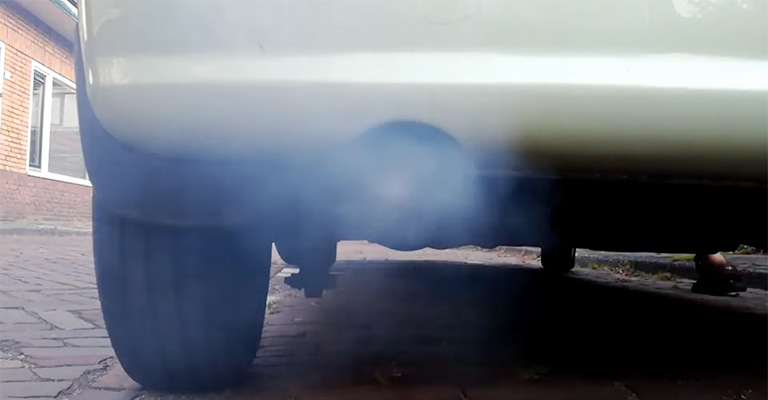
What Does Blue Exhaust Mean?
As I stated earlier, blue smoke indicates the presence of oil burning in the system. Exhausts from your vehicle can be of different colors, black, blue, and white. But none of these colors are desirable.
The healthy color of your exhaust should be clear or close to clear. Blue exhaust indicates oil is leaking and, as a result, getting burnt somewhere inside the vehicle system.
Oil is required to reduce friction in the engine’s moving mechanical parts like valves, shafts, and pistons. These parts are equipped with special equipment which prevents lubricating oil from seeping into unwarranted spaces.
Reasons Behind Blue Exhaust on Startup
There can be a good number of reasons why oil can find its way into the combustion chamber and generate blue exhaust. Some reasons are specific to the type of engine.
Let’s take a look at some reasons that can result in the emission of blue exhaust.
Broken or Worn-Out Valve Seals
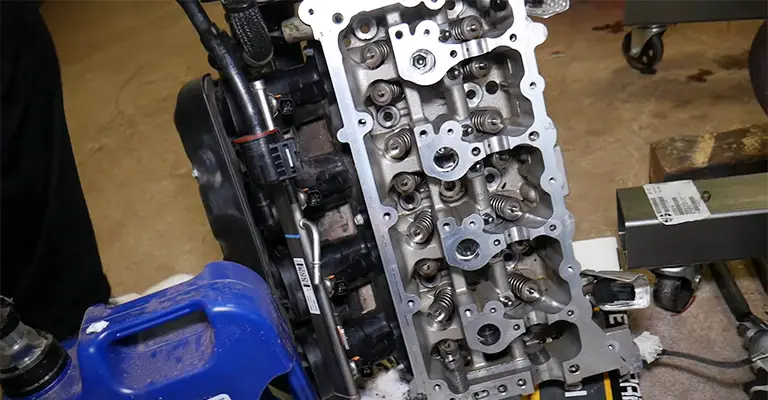
Engines come with different valves, which have various useful purposes. Valves ensure that liquids and gases reach their destination and don’t leak elsewhere.
If your engine isn’t diesel, blue puffs of smoke on startup indicate that your valve seals might have worn out.
Some engine valves are assigned to control the flow of air and gasoline mixture inside the combustion chamber. And as the mixture finishes burning, some valves guide the exhaust out of the chamber.
These valves operate mechanically, and oil is used to reduce friction and enable smooth operation. And the valve seals make sure the oil stays separated from the passing fuel mixture.
Not changing the oil regularly or using poor-quality oil can wear out the valve seals. A worn-out or broken valve seal won’t be able to keep the oil from entering the combustion chamber and getting burnt along the fuel to create smelly bluish smoke.
Damaged Glow Plug: For Diesel Engines
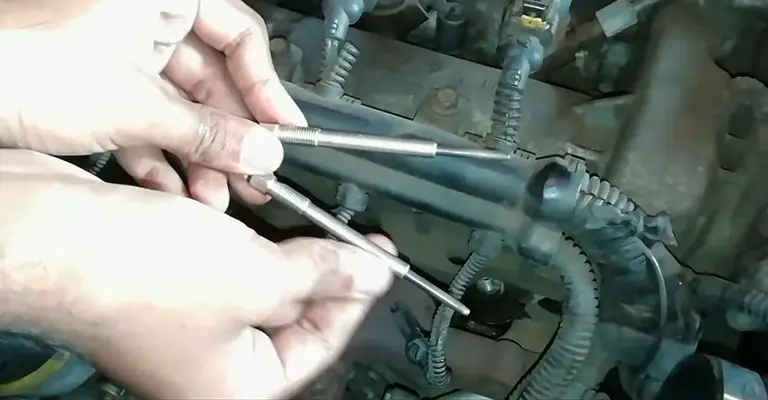
If your diesel car or truck is taking longer than usual to start and also emitting blue smoke from the exhaust, chances are the engine glow plugs have been damaged. When starting, diesel engines use a glow plug to ignite the diesel fuel.
It’s like a warm-up process for the engine. Once it has warmed up the engine, heat can ignite the fuel without the help of a glow plug.
A damaged or worn-out glow plug will take its time to warm the engine up, and during that period, it’ll keep creating blue smoke.
Oil Leaking onto Heated Engine Parts
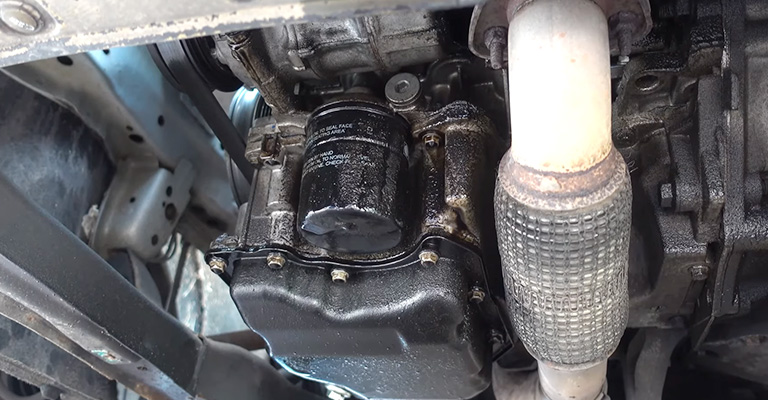
A broken head gasket or valve cover gasket can cause oil leakage on various engine parts. When these engine parts heat up, the oil will burn and create puffs of blue smoke along with a rancid smell.
This blue or bluish-gray smoke will come out from the vehicle’s back at startup and while you’re driving.
The smoke might not be noticeable while you’re driving. And when you sit idle, the smoke will look like it’s emitting from the exhaust pipe, even though it’s not.
Therefore, it’s always important to be aware of rancid, burning smells. If you’re cautious with the smell, you can sniff out a lot of potential future hazards.
Damaged Piston Rings
Piston rings are also installed to keep the oil from getting into the combustion chamber. Broken or damaged piston rings fail to keep the oil from leaking into the combustion chamber. And as a result, blue smoke is generated.
How to Fix the Blue Exhaust on Startup Issue
Don’t panic if you notice blue exhaust emitting from your tailpipe. A few ways can be very effective for precluding this blue smoke. Let’s take a look.
Clean the Engine
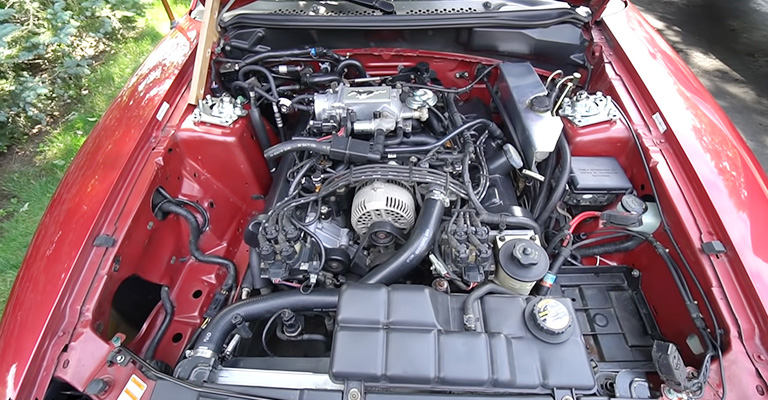
Oil leakage can simply cause by the accumulation of dirt and debris around the valves and oil return holes. Clogged return holes and valves fetter the movement of oil and cause it to leak into unwarranted places.
If your engine hasn’t been cleaned for a while, simply give it a proper cleaning before trying other solutions. It might just be the only issue behind the blue smoke.
Don’t Put Excess Oil
You should be careful when replacing the oil for your vehicle. If there is too much oil in the system, a good amount of it will likely leak. Remove excess oil if you notice blue smoke emission right after an oil change.
Repair Valve Seals
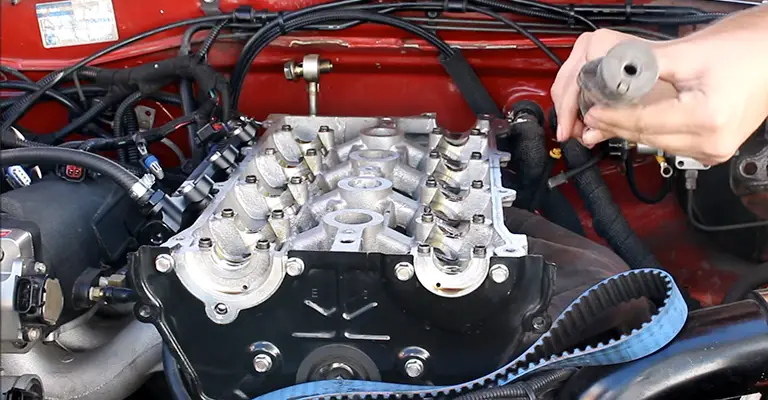
Broken valve seals are one of the most common reasons for blue smoke emissions. To replace the valve seals, first, detach the spring from the valve and the rocker’s arm. You’ll find the seal there.
Lift the old one and replace it with the new one. The task might sound simple in theory, but there are a lot of complications involved in the process.
If you don’t have enough mechanical expertise, it’s better to leave it in the hand of professionals.
Replace Piston Ring
If the reason behind the blue exhaust is broken piston rings, then you’re in for a great loss of money, I’m afraid. Although piston rings cost only around $50 each, setting them up requires breaking down the engine into parts, and that costs around $1000.
You shouldn’t keep driving with a broken piston ring just because the repair costs a lot because ignoring this issue can result in something even more hazardous in the future.
Frequently Asked Questions
Can I continue driving with blue smoke from the exhaust pipe?
It’s okay to keep driving with blue smoke from the exhaust pipe if the issue is temporary. And temporary blue smoke normally indicates leakage due to misplacing or overflow of oil.
If the blue smoke issue persists, you must take heed of it and fix it.
How to properly clean the engine to get rid of blue smoke?
First, open the hood and remove the air intake filter. Don’t forget to properly cover all electrical components with plastic wraps.
Apply water and degreaser, especially to the valves and oil return holes. Use a brush to scrub off all the dirt and debris. Then rinse it properly with water so that no soap or degreaser is left.
Conclusion
Blue exhaust may not always mean something serious, but don’t take chances with it. Especially blue smoke from exhaust on startup can often lead to something very deleterious.
Keeping track of weird smells in the vehicle is always easier than keeping track of the exhaust color. Always be aware of the smells in your vehicle, and don’t hesitate to consult professionals whenever necessary.
Leave a Reply